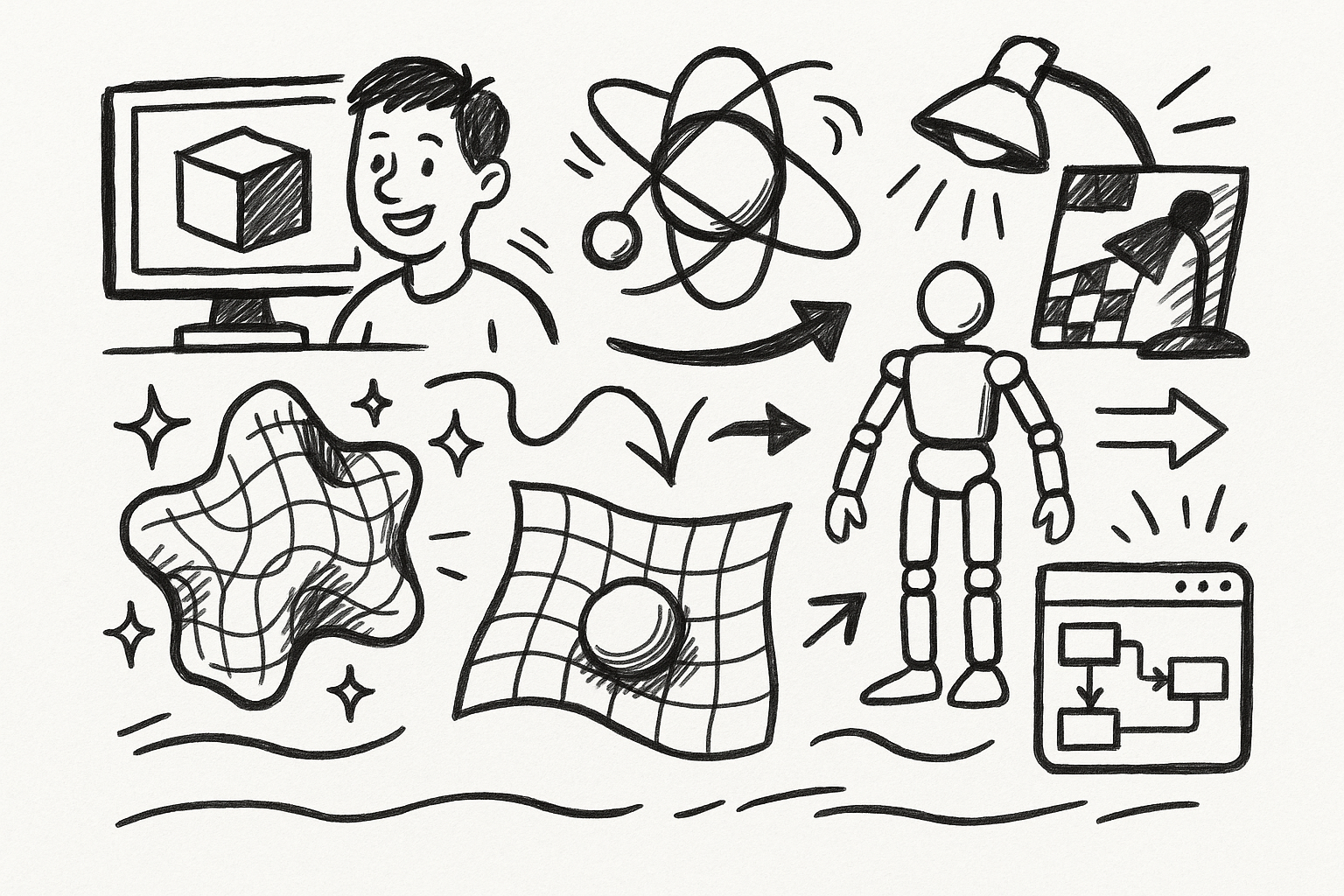Your Cart is Empty
Customer Testimonials
-
"Great customer service. The folks at Novedge were super helpful in navigating a somewhat complicated order including software upgrades and serial numbers in various stages of inactivity. They were friendly and helpful throughout the process.."
Ruben Ruckmark
"Quick & very helpful. We have been using Novedge for years and are very happy with their quick service when we need to make a purchase and excellent support resolving any issues."
Will Woodson
"Scott is the best. He reminds me about subscriptions dates, guides me in the correct direction for updates. He always responds promptly to me. He is literally the reason I continue to work with Novedge and will do so in the future."
Edward Mchugh
"Calvin Lok is “the man”. After my purchase of Sketchup 2021, he called me and provided step-by-step instructions to ease me through difficulties I was having with the setup of my new software."
Mike Borzage
Design Software History: Evolution and Impact of Generative Design in Modern Design Practices
October 20, 2024 6 min read


Introduction to Generative Design
Generative design is an innovative design methodology that leverages advanced algorithms and computational power to explore a vast array of design possibilities. By inputting design goals and constraints into generative design software, designers and engineers can automatically generate optimized design solutions that might not have been conceived through traditional methods. This approach stands at the intersection of design and technology, utilizing computational geometry, artificial intelligence, and optimization techniques to push the boundaries of what's possible in design. The key concepts of generative design include algorithm-driven creation, exploration of multiple design permutations, and optimization based on specified criteria such as weight, strength, and cost.
The evolution of design methodologies has been significantly influenced by technological advancements. Traditionally, design was a manual process, relying heavily on the creativity and experience of designers. With the advent of computer-aided design (CAD) in the late 20th century, the process became more efficient and precise, allowing for digital visualization and modification. Generative design represents the next leap, shifting from manual input to algorithmic generation, thus enabling the exploration of a much broader design space. The ability to automate complex design processes allows for innovations that are more efficient, sustainable, and tailored to specific performance requirements.
The importance of computational power and algorithms in design cannot be overstated in the context of generative design. Advanced algorithms, including genetic algorithms and machine learning techniques, are at the core of this methodology. They enable the processing of complex calculations required to evaluate numerous design variants against multiple constraints simultaneously. High-performance computing resources, including cloud computing, facilitate the handling of these computationally intensive tasks. As a result, designers can focus on setting design goals and constraints while the system generates and evaluates design alternatives, leading to more innovative and optimized solutions.
Historical Context of Generative Design Algorithms
The roots of generative design algorithms can be traced back to the early applications of algorithm-based design techniques such as evolutionary algorithms and genetic programming. These computational methods, inspired by natural selection principles, were among the first to automate and optimize design processes. In the 1960s and 1970s, pioneers in computer science and mathematics began exploring these concepts, laying the groundwork for future advancements. The early instances of these algorithms were limited by the computational power of the time, but they opened up new possibilities for automation and optimization in design.
Throughout the following decades, several key milestones in the development of generative design emerged. Advancements in computer graphics, computational geometry, and artificial intelligence contributed significantly to the evolution of generative design. In the 1990s and early 2000s, the introduction of more powerful computers and sophisticated software enabled more complex modeling and simulation. Notable projects and prototypes demonstrated the potential of generative design in various fields, from architecture to product development. These developments showcased the ability to generate designs that are optimized for specific criteria, such as material efficiency or structural performance, which traditional design methods could not easily achieve.
Influential figures have played crucial roles in advancing generative design. Researchers and practitioners such as Dr. Neri Oxman, a professor at the MIT Media Lab, have been instrumental in exploring the intersection of design, biology, and computation. Her work in material ecology and generative design has pushed the boundaries of what is possible in design and fabrication. Additionally, teams at leading software companies like Autodesk have developed tools that make generative design accessible to a wider audience. These contributions have helped to establish generative design as a significant methodology in the modern design landscape.
Modern Applications and Technologies
In the contemporary design environment, tools and software enabling generative design play a pivotal role in bringing this advanced methodology to practitioners across various industries. Software such as Autodesk Fusion 360 and Rhino's Grasshopper have become essential in facilitating the generative design process. These platforms integrate powerful algorithms with user-friendly interfaces, allowing designers to input parameters and constraints, and then generate multiple design options that meet specified criteria. They provide capabilities for simulation, analysis, and optimization, which are crucial for refining designs and ensuring they meet performance requirements.
The integration of cloud computing and artificial intelligence (AI) has significantly enhanced generative design processes. Cloud computing provides the necessary computational resources to process complex algorithms and large datasets, enabling the evaluation of numerous design permutations simultaneously. AI technologies, including machine learning and neural networks, contribute to smarter algorithms that can learn from previous iterations and improve over time. This combination allows for more efficient processing and the generation of highly optimized designs that balance multiple objectives such as cost, performance, and sustainability.
The modern landscape of generative design is also characterized by its application across diverse industries. From architecture and engineering to fashion and healthcare, the ability to automate and optimize design processes is leading to innovative solutions and products. Some of the key benefits of generative design include:
- Enhanced Efficiency: Automating design iterations saves time and resources.
- Optimized Performance: Designs are tailored to meet specific performance criteria.
- Material Savings: Reducing material usage leads to cost savings and sustainability.
- Innovative Solutions: Exploring unconventional designs that may not be intuitive to humans.
These advantages contribute to the widespread adoption of generative design technologies, revolutionizing traditional design workflows.
Future Implications and Challenges
The continued advancement of generative design algorithms holds significant potential for the future of design, yet it also presents several ethical and social implications. One concern is the possibility of job displacement as automation becomes more prevalent in the design process. While generative design can enhance efficiency and productivity, there is a fear that it may reduce the need for human designers in certain roles. This raises questions about the future of the design profession and the importance of investing in education and training to prepare designers for a changing landscape where they work alongside intelligent systems.
Another consideration is the balance between creativity and automation. There is an ongoing debate about how generative design affects the creative aspect of design work. While algorithms can generate a vast array of design options, some argue that they may limit the unique, human element of creativity. It is essential to find ways to ensure that designers can leverage these tools to enhance their creativity rather than replace it. This involves developing interfaces and workflows that allow for human input and intuition to play a significant role in the generative process.
Emerging trends in generative design include the integration with AI and Internet of Things (IoT) applications. As AI technologies become more advanced, they offer the potential to create even more intelligent generative design systems that can predict and adapt to user needs and environmental factors. The incorporation of IoT devices can provide real-time data that feeds into the design process, allowing for dynamic and responsive designs. These trends point toward a future where designs are not only optimized at the point of creation but continue to evolve throughout their lifecycle based on data and usage patterns.
Despite the promising advancements, there are obstacles to the widespread adoption of generative design. Technical limitations, such as the need for significant computational resources and specialized knowledge to operate complex software, can be barriers for smaller organizations or individual practitioners. Some of the major challenges include:
- Technical Complexity: Requires expertise in advanced software and algorithms.
- Computational Demands: High-performance computing resources may not be readily available.
- Cost of Implementation: Initial investment in software and hardware can be prohibitive.
- User Resistance: Hesitance to adopt new methodologies over established practices.
Overcoming these challenges requires continued development of user-friendly tools, education about the benefits and capabilities of generative design, and addressing concerns related to cost and accessibility.
Conclusion
In summary, the advancements in generative design algorithms represent a transformative shift in the way design is conceptualized and executed. By harnessing the power of advanced algorithms and computational resources, generative design allows for the exploration of a vast design space that was previously inaccessible. This approach not only optimizes designs based on specific criteria but also opens up new possibilities for innovation across various industries. As we have seen, the evolution from manual design methods to algorithm-driven processes has been enabled by significant technological advancements and contributions from influential figures in the field.
These advancements are shaping the future of design by introducing more efficient, sustainable, and innovative solutions. Generative design holds the potential to address complex challenges, such as resource optimization and environmental impact, by producing designs that are finely tuned to their intended purposes. However, it also brings to light important discussions about the role of technology in creative fields, the need for ethical considerations, and the importance of preparing the workforce for these changes.
Looking forward, it is crucial to encourage ongoing exploration and innovation in generative design practices and technology. Embracing these advancements requires a collaborative effort among designers, engineers, researchers, and technologists to continue developing tools that are accessible and beneficial to society. By addressing the challenges and capitalizing on the opportunities presented by generative design, we can ensure that this powerful methodology contributes positively to the future of design and engineering.
Also in Design News

Revolutionizing 3D Design: Exploring Five Groundbreaking Innovations in Cinema 4D
August 31, 2025 4 min read
Read More
Revolutionizing Telecommunications: The Rise of Advanced Design Software
August 31, 2025 16 min read
Read More
Cinema 4D Tip: Optimizing 2D Matte Integration with Projection Man in Cinema 4D
August 31, 2025 3 min read
Read MoreSubscribe
Sign up to get the latest on sales, new releases and more …


